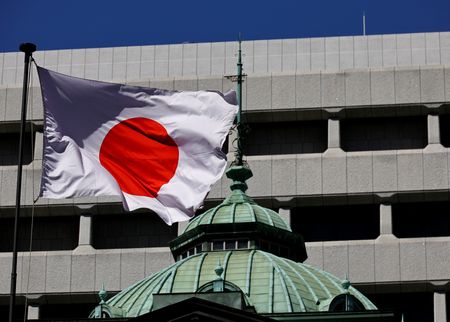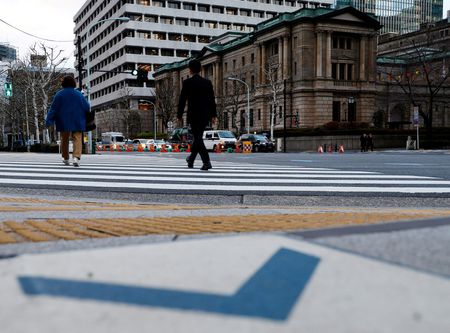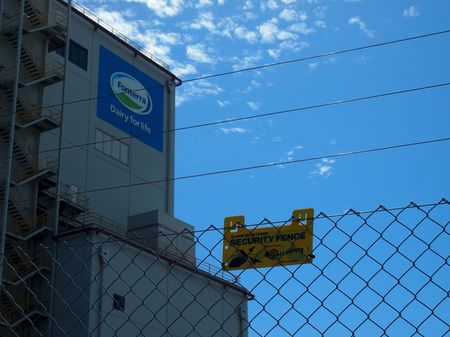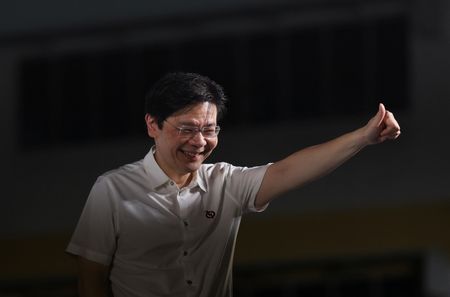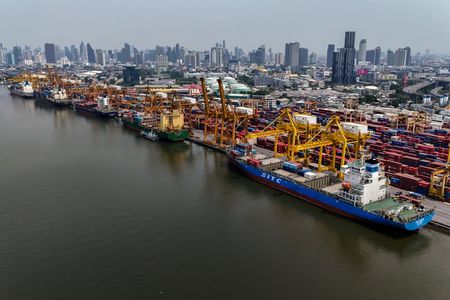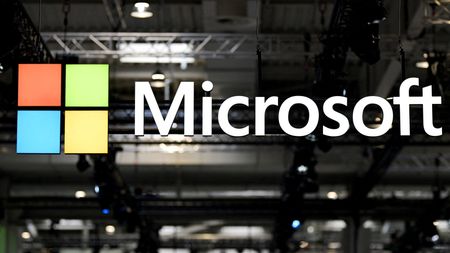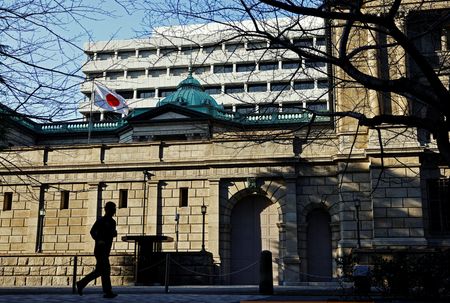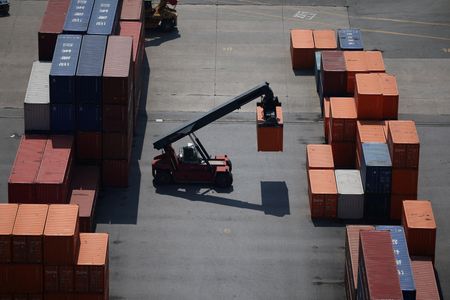By Leika Kihara and Makiko Yamazaki
TOKYO (Reuters) – The Bank of Japan kept interest rates steady and sharply cut its growth forecasts on Thursday, suggesting uncertainty surrounding U.S. tariffs and the hit to exports could keep policy in a holding pattern for some time.
But the central bank projected inflation would stay roughly on course to hit its 2% target in coming years, a sign that risks from U.S. tariffs could delay, but not derail, its rate hike plans.
As widely expected, the BOJ kept short-term interest rates steady at 0.5% by a unanimous vote.
Given growing headwinds from higher U.S. tariffs, the board slashed its economic growth and inflation forecasts in a quarterly outlook report released after the meeting.
But it said underlying inflation would accelerate after a period of stagnation as a tight job market lifts wages, signaling that the hit from U.S. tariffs was likely to be temporary.
“Japan’s economic growth is likely to moderate as trade and other policies in each jurisdiction slow overseas growth and weigh on corporate profits,” the BOJ said in a statement.
“Thereafter, Japan’s economy will see growth accelerate as overseas economies resume a moderate growth path,” it said.
Under fresh projections, the BOJ cut its economic growth forecast for the fiscal year ending March 2026 to 0.5% from 1.1% projected three months ago. It also slashed its growth forecast to a 0.7% expansion for the following fiscal year from 1.0% in January.
The BOJ now expects underlying consumer inflation to reach levels consistent with its 2% target around the latter half of fiscal 2026 and onward, the report said, pushing back the timing by around a year from the previous report in January.
“If our economic and price forecasts are realised, we will continue to raise our policy rate,” the BOJ said in a statement.
“Considering extremely high uncertainties over the future course of trade and other policies in each jurisdiction,” however, the BOJ will scrutinise economic price developments and guide policy without pre-conception, it said.
The BOJ expects core consumer inflation to hit 2.2% in fiscal 2025 and 1.7% in fiscal 2026, then accelerate to 1.9% in fiscal 2027.
“The BOJ appears to be maintaining a rate-hike stance. Given high uncertainty, however, it probably wants to leave itself a free hand on the timing,” said Izuru Kato, chief economist at Totan Research.
Markets are closely watching BOJ Governor Kazuo Ueda’s post-meeting news conference for clues on how U.S. President Donald Trump’s tariffs would affect the BOJ’s rate-hike path.
TARIFFS TO HIT GROWTH
Japanese government bond yields and the yen fell after the BOJ’s decision.
“Everything’s been reduced in terms of their forecasts and the market seems to be selling the yen at the moment,” said Bart Wakabayashi, Tokyo branch manager at State Street.
“The BOJ is taking a step back. They want to see how the data will change or which way it’s pointing once the policies are put in place.”
Rising trade tensions from Trump’s sweeping tariffs have sent shockwaves through markets and led to a sharp downgrade in the International Monetary Fund’s global growth forecasts.
In the report, the BOJ said higher tariffs would weigh on Japan’s economy by slowing global trade and hurting business confidence through heightened uncertainty and market volatility.
Companies may also start focusing on cutting costs rather than raising wages, it said, but added steady rises in food costs could have second-round effects on underlying inflation.
After a period of slowdown, exports, output and capital expenditure are expected to resume an uptrend, the BOJ said, offering a cautiously optimistic view on the long-term outlook.
“Domestic wage growth in this year’s labour negotiations is expected to exceed 5%, which will support the case for additional interest rate hike,” said Kanako Nakamura, an economist at Daiwa Institute of Research, projecting the next hike to come in the October-December quarter.
The BOJ raised its short-term interest rate to 0.5% in January in the belief the economy was on the cusp of sustainably achieving its 2% inflation target. While Ueda has signalled the BOJ’s readiness to keep raising rates, Trump’s tariffs have complicated its decision on when and how far it can hike.
(Reporting by Leika Kihara and Makiko Yamazaki; Additional reporting by Satoshi Sugiyama, Kantaro Komiya, Chang-Ran Kim and Tetsushi Kajimoto; Editing by Sam Holmes)

